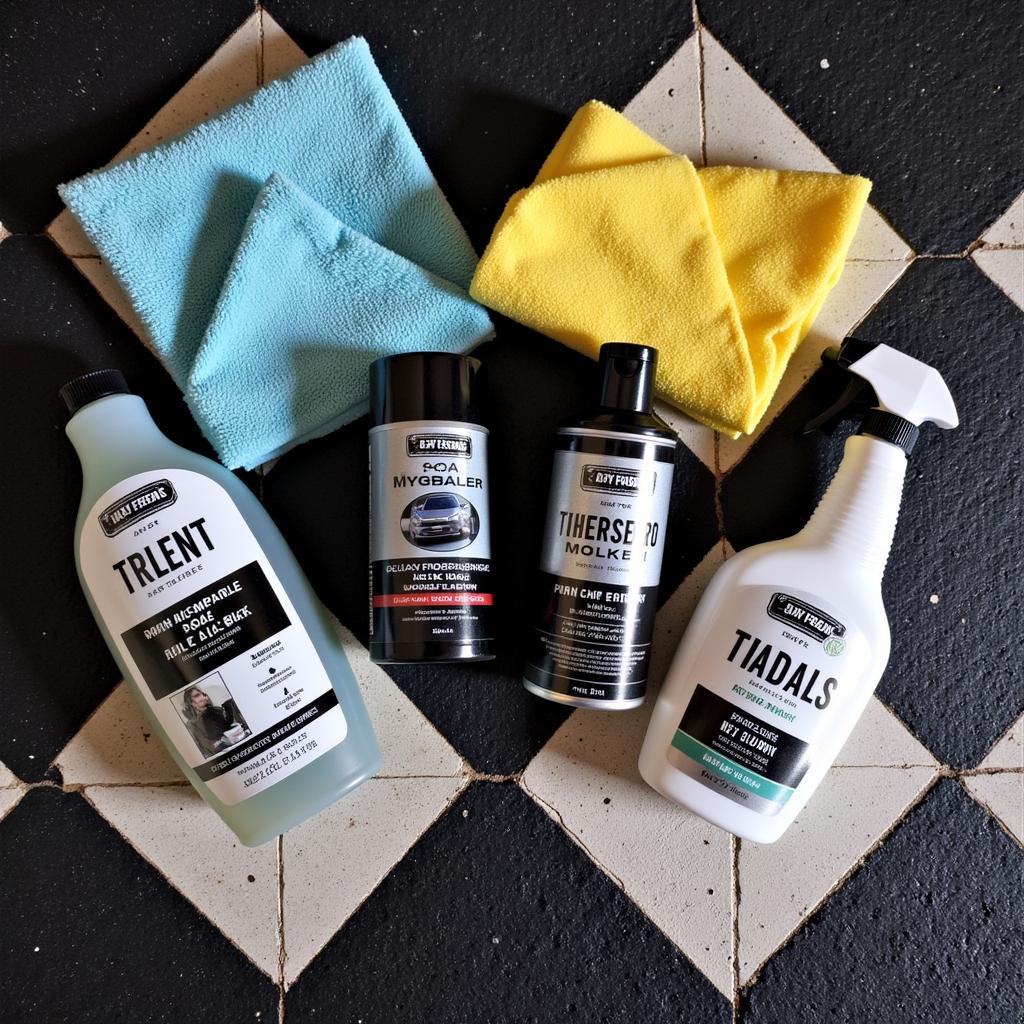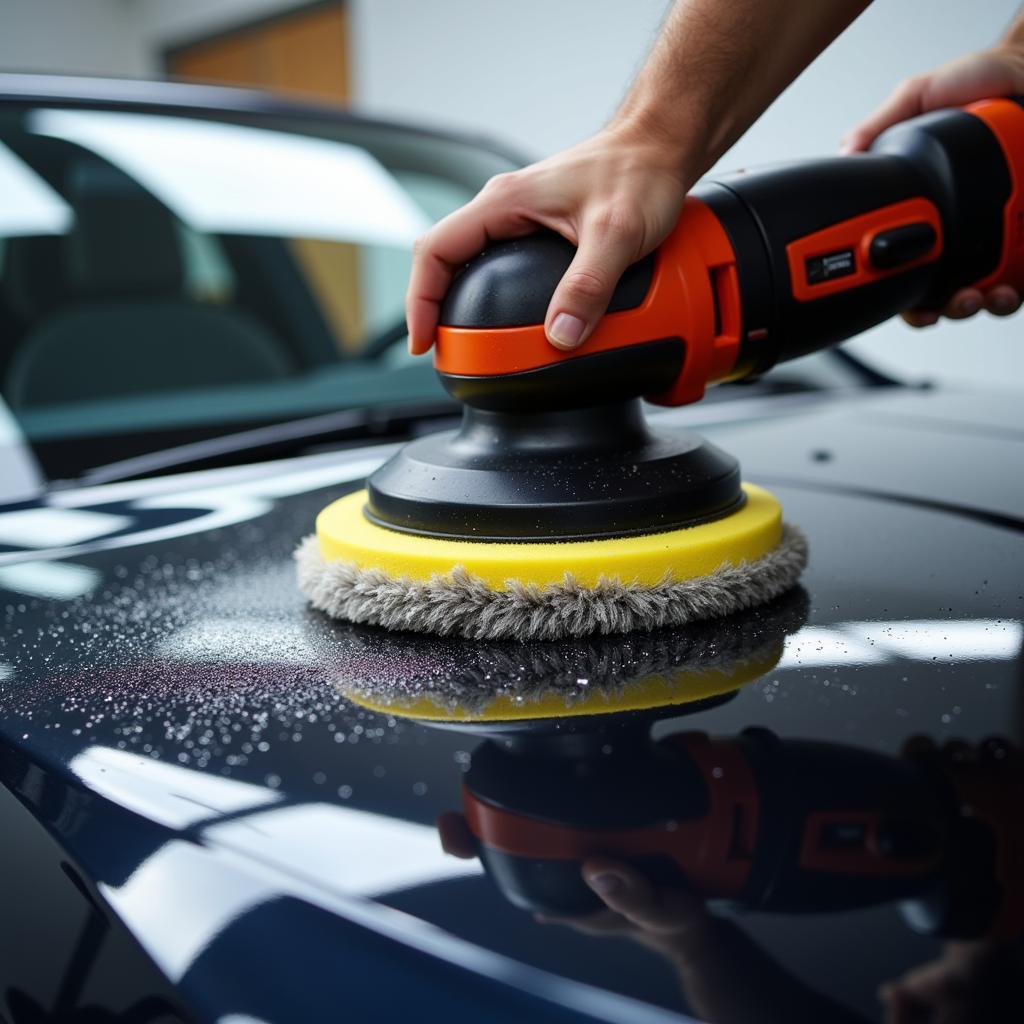Getting that showroom shine on your car doesn’t always require a trip to a professional detailer. With the right DIY car detailing products and a bit of elbow grease, you can achieve impressive results right in your driveway. This guide will walk you through the essential products you need to give your car the care it deserves.
Understanding the Basics: Why DIY Car Detailing?
DIY car detailing is more than just a wash and wax. It’s about preserving your car’s paint, interior, and overall value. By using the Best Diy Car Detailing Products, you can:
- Protect your investment: Regular detailing helps prevent paint damage from UV rays, contaminants, and minor scratches.
- Save money: Professional detailing can be costly. DIY allows you to invest in quality products and do it on your own time.
- Pride of ownership: There’s a sense of satisfaction that comes from taking care of your car yourself.
 DIY Car Detailing Supplies
DIY Car Detailing Supplies
Essential DIY Car Detailing Products: Your Arsenal for Success
Choosing the best DIY car detailing products can seem daunting with so many options available. Here’s a breakdown of the essentials:
1. Car Wash: The Foundation of Detailing
A quality car wash is the cornerstone of any detailing routine. It removes loose dirt, grime, and contaminants before you move on to more intensive steps.
What to look for: A pH-neutral formula that’s safe for all paint types. Avoid dish soap, which can strip away protective waxes.
Pro Tip: Use the two-bucket wash method: one with soapy water, the other with clean water for rinsing your wash mitt. This helps prevent swirl marks.
2. Clay Bar: Smoothing Out Imperfections
Even after washing, your car’s paint may still feel rough to the touch. This is due to embedded contaminants like tree sap, industrial fallout, and brake dust. A clay bar treatment removes these stubborn particles, leaving a smooth surface for polishing and waxing.
What to look for: Clay bars come in various strengths. Start with a mild clay and use a clay lubricant to prevent marring.
Pro Tip: Feel the paint with your hand before and after claying. You’ll be amazed at the difference in smoothness.
3. Polish: Restoring Shine and Removing Defects
Polishing removes minor scratches and swirl marks, restoring clarity and gloss to your car’s paint.
What to look for: Polishes come in different cut levels (how aggressive they are). For beginners, a fine-grade polish is a good starting point.
Pro Tip: Use a dual-action polisher for best results. Apply polish sparingly and work in small sections.
 Car Polishing
Car Polishing
4. Wax or Sealant: The Protective Layer
Waxing or sealing your car provides a protective barrier against UV rays, water spots, and contaminants.
What to look for: Carnauba wax offers a deep, warm shine but needs reapplication every few months. Sealants provide longer-lasting protection with a more reflective shine.
Pro Tip: Apply wax or sealant in thin, even coats using a foam applicator pad. Let it haze over before buffing off with a microfiber towel.
5. Interior Detailer: Keeping the Inside Fresh
Don’t neglect your car’s interior! A good interior detailer cleans and protects various surfaces, including leather, vinyl, plastic, and even carpets.
What to look for: Choose a product with UV protection to prevent fading and cracking of interior materials.
Pro Tip: Use a soft-bristled brush to agitate dirt and grime in hard-to-reach areas like air vents and cup holders.
 Cleaning Car Interior
Cleaning Car Interior
Best DIY Car Detailing Products on a Budget
You don’t have to break the bank to find effective car detailing products. Many reputable brands offer budget-friendly options that deliver great results. Look for sales and discounts, and consider purchasing products in larger quantities to save in the long run.
FAQs About DIY Car Detailing Products
Q: How often should I detail my car?
A: It’s generally recommended to detail your car every 3-4 months, or more frequently if you live in a harsh climate or frequently expose your car to dirt and grime.
Q: Can I use household products for car detailing?
A: It’s best to avoid using household cleaners like dish soap or glass cleaner on your car. These products can strip away waxes and damage paint. Stick to dedicated car detailing products formulated for automotive surfaces.
Q: What’s the difference between a car polish and a car wax?
A: Polishing removes imperfections from the paint, while waxing protects the paint. Think of it this way: polish is for correcting, while wax is for protecting.
Level Up Your Detailing Game
Looking for more ways to enhance your DIY detailing experience? Check out our guides on the best way to self detail a car and the best way detail car diy for a step-by-step walkthrough and expert tips. If you need help organizing your equipment, our article on the best way carry car detailing gear has you covered. For those interested in maximizing their investment, we’ve also compiled a list of the best car detailing longmony techniques. And if you’re curious about the tools of the trade used by professionals, be sure to read our guide on the best professional car detailing brands.
Conclusion: Take Pride in Your Ride
Using the best DIY car detailing products empowers you to take your car care to the next level. By investing a little time and effort, you can enjoy a vehicle that looks great and maintains its value for years to come.

Leave a Reply